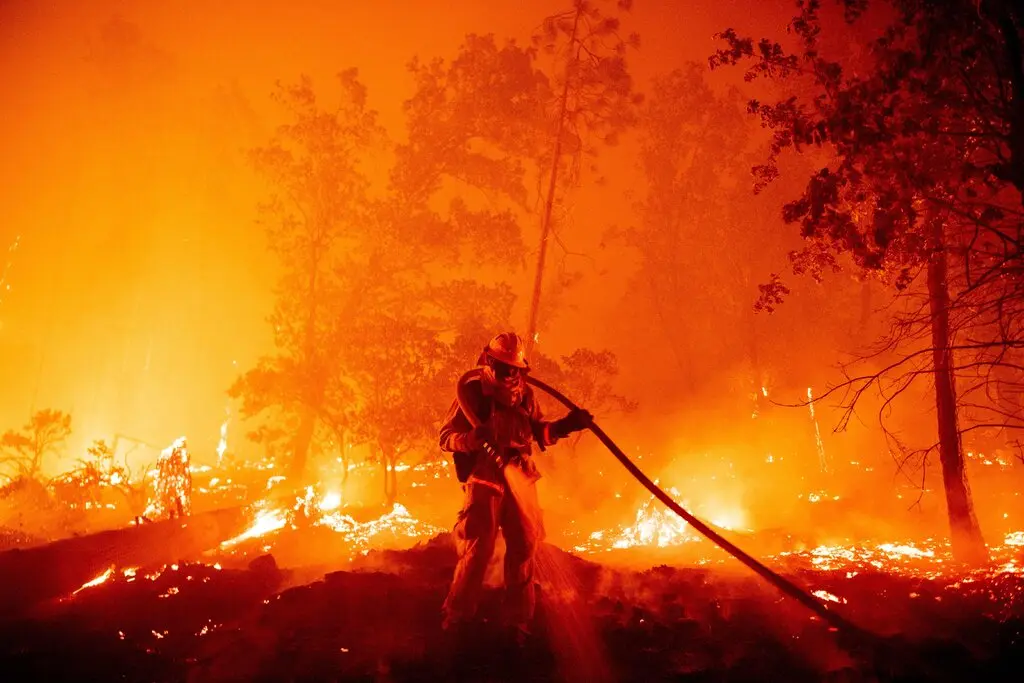Introduction to Wildfires in California
Introduction
Wildfires in California Wildfires have become more than just seasonal occurrences—they’re now year-round threats. From the devastating Camp Fire in 2018 to the Dixie Fire in 2021, wildfires have caused catastrophic damage to communities, wildlife, and the economy. But why is California so prone to wildfires? What factors contribute to the increasing frequency and intensity of these fires? And what steps can be taken to mitigate the risks?
In this article, we’ll explore the causes, impacts, and potential solutions to California’s wildfire crisis. Whether you live in California or are simply concerned about climate change and its effects, understanding the wildfire problem is essential for building safer, more resilient communities.
History of Wildfires in California
Major Wildfires in California’s History
California’s history is marked by devastating wildfires that have left indelible scars. Notable fires include:
- The Camp Fire (2018): The deadliest fire in California’s history, claiming 85 lives and destroying the town of Paradise.
- The Thomas Fire (2017): At the time, it was the largest wildfire in the state’s history, burning over 280,000 acres.
- The Dixie Fire (2021): One of the most extensive wildfires, consuming nearly 1 million acres and destroying entire communities.
The frequency of such fires has increased dramatically in recent years, fueled by climate change and human activities.
Frequency and Intensity Trends
A century ago, wildfires were a natural part of California’s ecosystem, helping to clear dead vegetation and promote new growth. However, modern wildfires are different.
- Frequency: There has been a significant increase in wildfires over the past few decades.
- Intensity: Fires now burn hotter, spread faster, and cover more extensive areas, causing unprecedented damage.
Causes of California Wildfires
Natural Causes of Wildfires
While human activity is a significant factor in wildfires, nature also plays a role. Some of the natural causes include:
- Lightning Strikes: Dry thunderstorms in the summer often spark fires.
- Santa Ana Winds: These strong, dry winds can fan flames, causing small fires to spread rapidly.
- Drought Conditions: Prolonged droughts dry out vegetation, creating perfect conditions for wildfires.
Natural causes are part of California’s ecosystem, but their impact has intensified due to climate change.
Human-Caused Wildfires
Unfortunately, human activity is responsible for the majority of California wildfires. Common human causes include:
- Campfires and Fireworks: Unattended campfires and illegal fireworks often lead to accidental wildfires.
- Arson: Intentional fire-setting remains a significant problem.
- Power Lines: Utility companies have been held accountable for sparking wildfires due to aging infrastructure and negligence.
One of the deadliest examples is the Camp California Wildfires Fire in 2018, which was caused by faulty power lines owned by PG&E.
Impact of Wildfires on California
Environmental Damage
Wildfires wreak havoc on California’s natural landscapes.
- Deforestation: Fires destroy vast forests, reducing biodiversity and leaving soil vulnerable to erosion.
- Air Pollution: Smoke from California Wildfires contributes to poor air quality, causing respiratory problems for residents and wildlife.
- Loss of Wildlife: Animals lose their habitats and are often unable to escape fast-moving fires.
The long-term effects on the environment include changes in ecosystems and soil degradation, making it harder for vegetation to recover.
Economic Costs
The financial toll of wildfires is staggering.
- Property Damage: Thousands of homes and businesses are destroyed each year.
- Insurance Costs: Wildfire-prone areas face skyrocketing insurance premiums.
- Disaster Relief: The state spends billions on firefighting efforts and disaster recovery.
For example, the Dixie Fire alone caused over $600 million in damages. Residents who lose their homes often struggle to rebuild, facing both financial and emotional burdens.
Health Impacts on Residents
Wildfires affect more than just the environment California Wildfires and economy—they pose significant health risks to Californians.
- Respiratory Problems: Smoke inhalation can cause asthma attacks, bronchitis, and other respiratory issues.
- Mental Health: The trauma of losing homes, possessions, and loved ones in a wildfire can lead to PTSD, anxiety, and depression.
- Long-Term Risks: Prolonged California Wildfires exposure to wildfire smoke has been linked to heart disease and other chronic conditions.
How Climate Change Is Contributing to Wildfires
Rising Temperatures and Prolonged Droughts
Climate change plays a significant role in increasing the severity of wildfires in California. Rising global temperatures have created a hotter and drier climate, which is a perfect recipe for wildfires to ignite and spread rapidly.
Here’s how climate change fuels wildfires:
- Warmer Temperatures: Hotter weather causes vegetation to dry out, making it more flammable.
- Prolonged Droughts: California has experienced long-term droughts, reducing moisture in the soil and vegetation.
- Snowpack Reduction: The state’s mountain snowpack is melting earlier in the year, leaving less water available during the dry months.
For example, the 2020 wildfire season was one of the worst on record, with over 4 million acres burned. Scientists attribute the increased intensity to climate change’s effect on weather patterns.
Shifts in Vegetation and Wildlife Patterns
Climate change doesn’t just make the weather hotter; it also affects ecosystems and vegetation in ways that make wildfires worse.
Changes include:
- Drier Forests: Trees and plants California Wildfires that used to retain moisture are now drying out faster.
- Invasive Species: Climate change has allowed non-native plants, like cheatgrass, to thrive. These plants are highly flammable and contribute to fire spread.
- Wildlife Migration: Animals are being forced to move to new areas, which disrupts ecosystems and can affect natural fire management processes.
These shifts make it harder for forests California Wildfires to recover from fires, leading to long-term ecological damage.
The Role of Human Activity in Wildfire Spread
Urban Development in Fire-Prone Areas
As California’s population grows, more homes are being built in wildfire-prone areas, often referred to as the Wildland-Urban Interface (WUI). These are regions where human development meets natural areas, creating a dangerous overlap.
Why is this a problem?
- Increased Fire Risk: Homes built near forests and brush increase the chances of fires starting and spreading.
- Evacuation Challenges: It’s harder to evacuate densely populated areas when wildfires break out.
- Rebuilding Costs: After a fire, rebuilding homes in the same risky areas leads to a cycle of destruction and reconstruction.
Residents living in these areas must take extra precautions to fireproof their homes, but the risk remains high.
Negligence and Arson
Human error and intentional acts of California Wildfires arson are also significant contributors to wildfires. Some causes include:
- Unattended Campfires: Carelessness with campfires in forests can lead to massive blazes.
- Discarded Cigarettes: Something as small as a cigarette butt can spark a fire in dry conditions.
- Power Line Failures: Aging infrastructure, particularly power lines, has been responsible for many deadly wildfires.
For example, Pacific Gas and Electric (PG&E) has been found liable for several major fires due to faulty power lines and equipment, resulting in billions of dollars in damages and settlements.
Current Strategies for Managing Wildfires
Fire Suppression Techniques
California spends billions each year on California Wildfires firefighting efforts, but traditional fire suppression tactics are becoming less effective as fires grow in intensity.
Key firefighting techniques include:
- Aerial Water Drops: Aircraft drop water or fire retardant on active fires to slow their spread.
- Firebreaks: Crews create firebreaks by clearing vegetation to stop the fire from advancing.
- Ground Crews: Firefighters on the ground work to contain fires by digging trenches and cutting down trees.
While these methods are essential California Wildfires, they are increasingly being overwhelmed by the size and speed of modern wildfires.
Controlled Burns and Forest Management
One of the most effective ways to prevent wildfires is through controlled burns—deliberate, small fires set under controlled conditions to reduce fuel buildup.
Benefits of controlled burns:
- Reduces Dead Vegetation: Removes dry leaves, twigs, and other flammable materials that can fuel wildfires.
- Promotes Healthy Forests: Mimics natural fire cycles, which some ecosystems rely on for regeneration.
- Protects Communities: Reduces the risk of catastrophic fires reaching residential areas.
However, controlled burns must be carefully managed to avoid getting out of control. This requires significant resources and planning.
Innovations in Wildfire Prevention and Detection
Use of AI and Satellite Technology
Technology is playing a critical role in California Wildfires improving wildfire detection and prevention efforts.
Some cutting-edge innovations include:
- AI-Powered Detection Systems: These systems analyze weather patterns, humidity levels, and vegetation dryness to predict where fires are likely to start.
- Satellite Monitoring: Satellites can detect heat signatures and smoke from space, allowing for early detection of wildfires.
- Drones: Drones equipped with thermal cameras are used to monitor fire progression and identify hotspots.
These tools provide real-time data to firefighters, allowing them to respond faster and more effectively.
Early Warning Systems
California has invested in early warning systems to alert residents of wildfire risks. These systems include:
- AlertWildfire: A network of cameras and sensors placed in fire-prone areas to detect fires early.
- Emergency Alerts: Mobile alerts sent to residents’ phones to warn them of nearby wildfires and evacuation orders.
- Community Sirens: Loud sirens in high-risk areas to warn residents when a fire is detected.
Early warnings can save lives by giving California Wildfires people more time to evacuate before a fire reaches their homes.
Preparing Communities for Wildfire Risks
Emergency Preparedness Plans
Residents in wildfire-prone areas must have a clear emergency preparedness plan.
Steps to take:
- Create a Go-Bag: Pack essential items like water, food, medications, and important documents.
- Know Evacuation Routes: Familiarize yourself with local evacuation routes and shelters.
- Fireproof Your Home: Clear brush and debris around your property and use fire-resistant materials for roofing and siding.
Being prepared can make the difference between life and death during a wildfire.
Evacuation Strategies
Evacuating during a wildfire can be chaotic and dangerous, so it’s crucial to have a well-planned strategy.
Key tips for safe evacuation:
- Leave Early: Don’t wait for mandatory evacuation orders—leave as soon as you feel unsafe.
- Follow Official Instructions: Pay attention to emergency alerts and follow instructions from local authorities.
- Drive Safely: Roads may be congested, so drive cautiously and be prepared for delays.
Practicing evacuation drills can help families feel more prepared when disaster strikes.
Government Policies and Wildfire Legislation
California Fire Prevention Laws
The state of California has implemented a California Wildfires variety of fire prevention laws to help reduce the risk of wildfires. These laws focus on land management, building codes, and holding utility companies accountable for negligence.
Key laws include:
- Defensible Space Requirements: Homeowners in high-risk areas must maintain a buffer zone between their homes and surrounding vegetation to reduce the chances of a fire spreading to structures.
- Building Codes: New constructions in fire-prone areas must use fire-resistant materials and follow strict guidelines to minimize fire risk.
- Utility Regulations: Utility companies like PG&E are required to upgrade their equipment and implement safety measures to prevent power lines from sparking fires.
Despite these laws, enforcement remains a challenge, especially in rural areas where resources are limited.
Federal Policies and Assistance
The U.S. federal government also plays a significant role in wildfire prevention and response efforts. Agencies like FEMA (Federal Emergency Management Agency) and the U.S. Forest Service provide funding, resources, and support to states affected by wildfires.
Federal policies include:
- Disaster Relief Funding: Provides financial assistance to communities affected by wildfires.
- Forest Management Programs: Initiatives to reduce fire risks through controlled burns and forest thinning.
- Wildfire Prevention Grants: Funding for local governments to improve fire safety infrastructure and emergency response systems.
However, critics argue that more California Wildfires comprehensive federal action is needed to address the root causes of wildfires, particularly climate change.
Future Outlook: What Can Be Done to Reduce Wildfire Risks?
Role of Sustainable Land Management
One of the most effective ways to reduce wildfire risks is through sustainable land management practices.
Key strategies include:
- Forest Thinning: Removing excess vegetation to reduce the amount of fuel available for wildfires.
- Controlled Burns: Setting small, controlled fires to clear out dry vegetation before it can fuel a larger wildfire.
- Reforestation Efforts: Planting native trees and plants that are more resistant to fire and drought conditions.
Sustainable land management requires collaboration between government agencies, private landowners, and local communities to be successful.
Importance of Public Awareness and Education
Public awareness and education are critical components of wildfire prevention. Many wildfires are caused by human negligence, which can be reduced through better education.
Public awareness campaigns should focus on:
- Fire Safety Tips: Educating residents on how to prevent accidental fires, such as properly extinguishing campfires and avoiding outdoor burning during high-risk periods.
- Evacuation Preparedness: Teaching communities how to create emergency plans and prepare for evacuations.
- Wildfire Resilience: Encouraging California Wildfires homeowners to fireproof their properties and create defensible space around their homes.
Educational programs can be conducted through schools, community organizations, and government initiatives.
FAQs
1. Why is California so prone to wildfires?
California’s climate, vegetation, California Wildfires and topography make it highly prone to wildfires. The state experiences hot, dry summers and strong winds, which create perfect conditions for fires. Additionally, human activity and climate change have increased the frequency and severity of wildfires.
2. What are some of the most destructive wildfires in California’s history?
Some of the most destructive wildfires in California include the Camp Fire (2018), which killed 85 people and destroyed the town of Paradise, the Thomas Fire (2017), and the Dixie Fire (2021), which burned nearly a million acres.
3. How does climate change contribute to wildfires?
Climate change leads to rising temperatures, prolonged droughts, and shifts in weather patterns, all of which create conditions that are more conducive to wildfires. It also affects vegetation and ecosystems, making them more susceptible to burning.
4. What can homeowners do to protect their properties from wildfires?
Homeowners can protect their California Wildfires properties by creating defensible space, using fire-resistant building materials, and keeping their surroundings clear of dry vegetation. It’s also essential to have an emergency preparedness plan in place.
5. How is technology helping to fight wildfires?
Technology plays a critical role in wildfire prevention and detection. AI systems, satellite monitoring, and drones are being used to detect fires early and track their progression in real-time. These tools help firefighters respond more effectively to wildfires.
Conclusion
California’s wildfire crisis is a complex issue with no single solution. The combination of climate change, human activity, and natural factors has created a perfect storm for increasingly destructive wildfires. While government policies, technology, and land management practices are helping to reduce risks, much more needs to be done to address the root causes of the problem.
Residents and policymakers must work together to create fire-resilient communities. By investing in wildfire prevention, improving emergency response systems, and promoting public awareness, California can mitigate the impact of wildfires and protect its people, wildlife, and natural landscapes for future generations.





